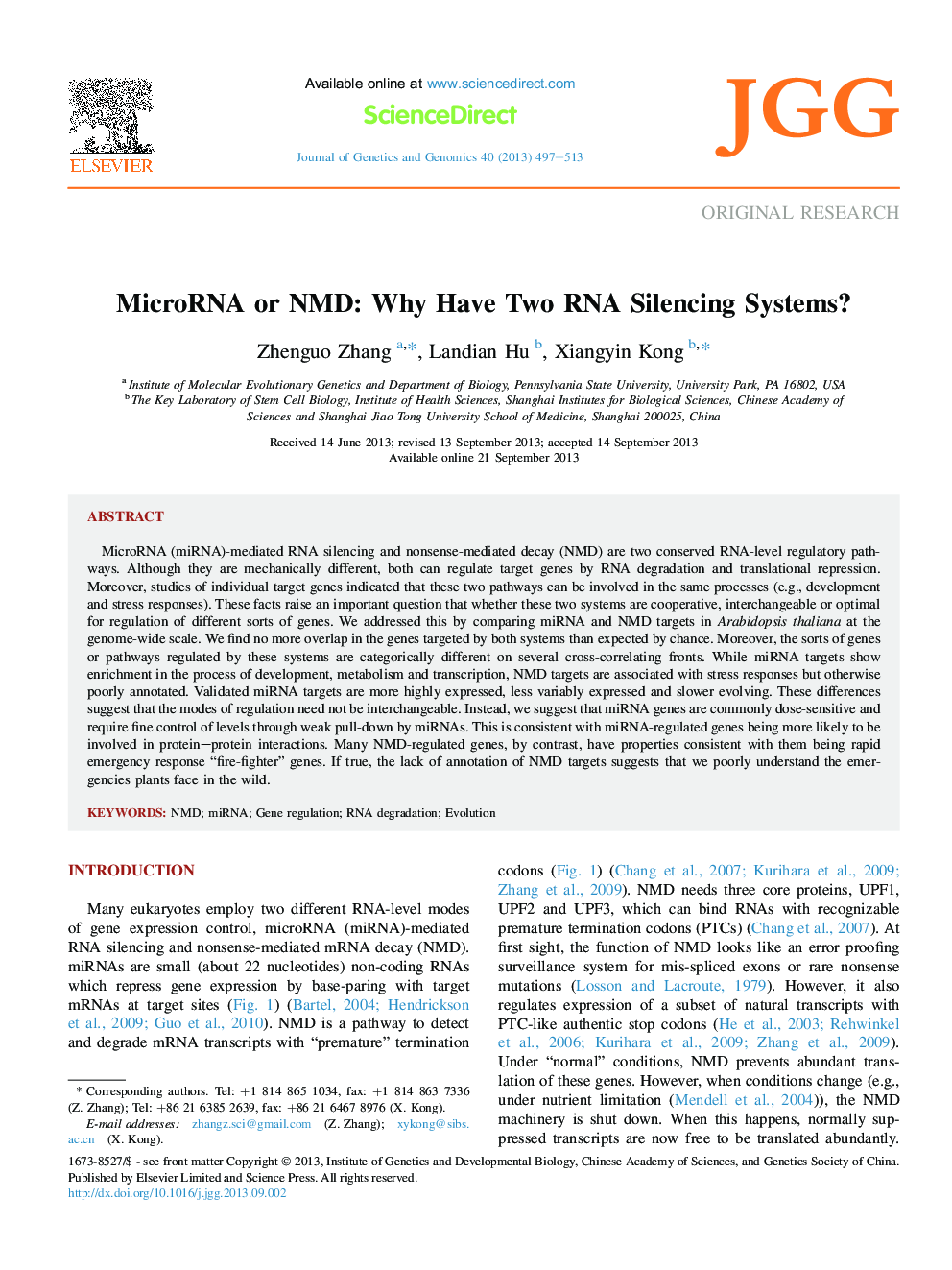| Article ID | Journal | Published Year | Pages | File Type |
|---|---|---|---|---|
| 2787481 | Journal of Genetics and Genomics | 2013 | 17 Pages |
MicroRNA (miRNA)-mediated RNA silencing and nonsense-mediated decay (NMD) are two conserved RNA-level regulatory pathways. Although they are mechanically different, both can regulate target genes by RNA degradation and translational repression. Moreover, studies of individual target genes indicated that these two pathways can be involved in the same processes (e.g., development and stress responses). These facts raise an important question that whether these two systems are cooperative, interchangeable or optimal for regulation of different sorts of genes. We addressed this by comparing miRNA and NMD targets in Arabidopsis thaliana at the genome-wide scale. We find no more overlap in the genes targeted by both systems than expected by chance. Moreover, the sorts of genes or pathways regulated by these systems are categorically different on several cross-correlating fronts. While miRNA targets show enrichment in the process of development, metabolism and transcription, NMD targets are associated with stress responses but otherwise poorly annotated. Validated miRNA targets are more highly expressed, less variably expressed and slower evolving. These differences suggest that the modes of regulation need not be interchangeable. Instead, we suggest that miRNA genes are commonly dose-sensitive and require fine control of levels through weak pull-down by miRNAs. This is consistent with miRNA-regulated genes being more likely to be involved in protein–protein interactions. Many NMD-regulated genes, by contrast, have properties consistent with them being rapid emergency response “fire-fighter” genes. If true, the lack of annotation of NMD targets suggests that we poorly understand the emergencies plants face in the wild.
